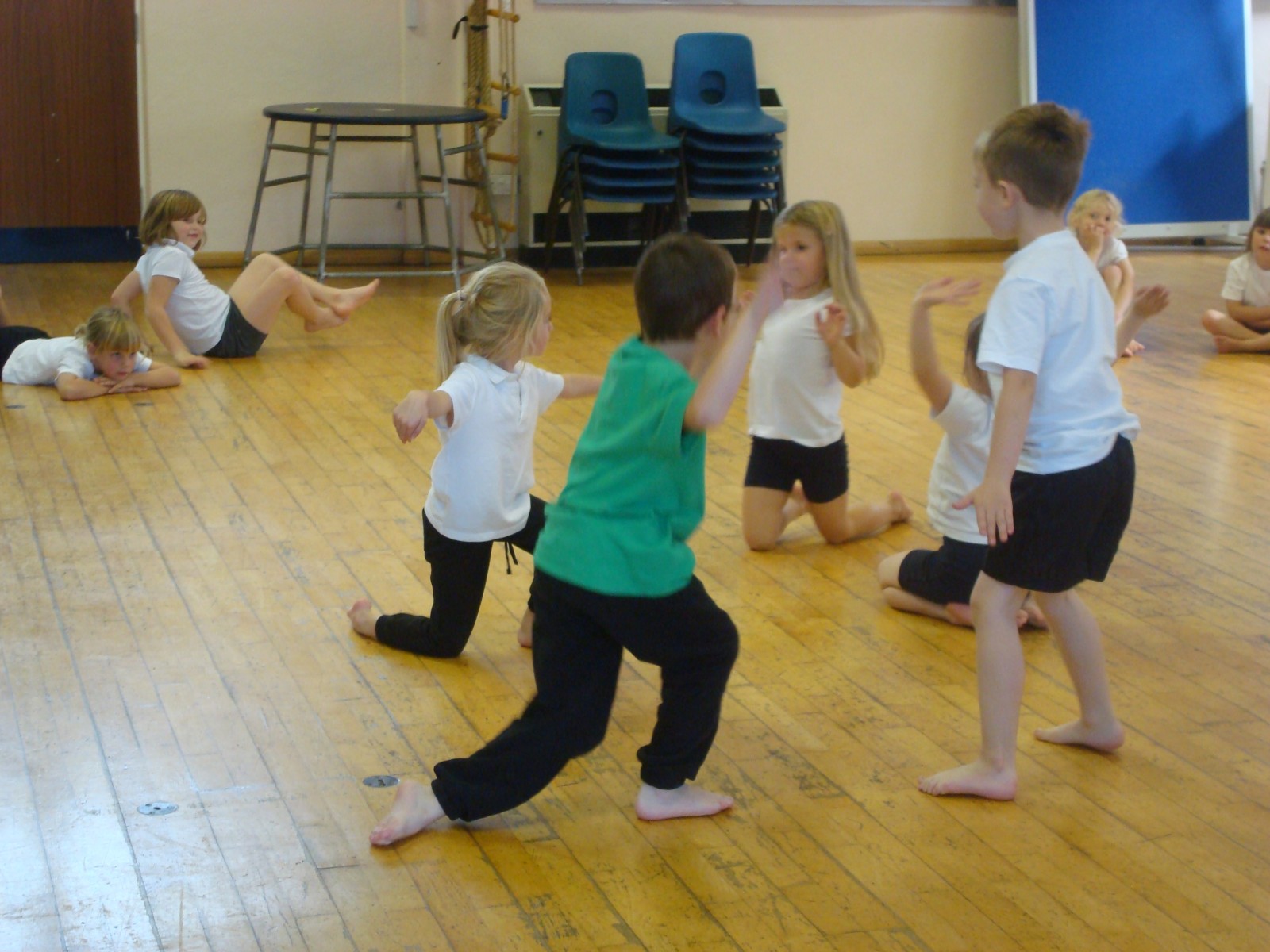Barnyard Antics
Children benefit by kinetic learning. By incorporating expressive movement into literacy lessons, children develop greater confidence and capacity to interpret and process characters and story events. These two exercises support vocabulary development and comprehension, as well as reinforce understanding of the story characters. Students will be asked to identify specific character traits E.B. White assigned and then movement associated with those animal/insect characteristics.
Teach students about elements of composition. This link clearly defines and demonstrate these: http://www.artsalive.ca/en/dan/make/toolbox/elements.asp
By doing so, they will realize that their bodies may be used as visual elements to define space for their own experience as well as the viewers.
Character assignments are given (randomly) to small groups. One student will record as others list qualities and or habits which the group will then emulate. The teacher will ask students to represent these for a few minutes all together (or one from each group in sets depending on group dynamic).
Next, scenes will be distributed and small groups will be given approximately five minutes to consider how they will demonstrate expressive movement for these. Groups will move from designated points in the room to support flow; starting and ending points.
Grade: 5, ELA (English Language Arts) or PE (Physical Education)
Materials:
Charlotte’s Web, E.B. White
Bell to signal start/end of movement
http://www.artsalive.ca/en/dan/
Assessment: Student will complete a short handout with possible questions:
I felt: “awkward, free, happy/silly, nervous, brave…” (Circle one)
What I liked about these exercises: (Fill in)
It was difficult/easy (circle one) to move across the room with others in a way other than walking
I want to try more movement: “no way, maybe, definitely…” (Circle one)
Time: (1) 45 class period

